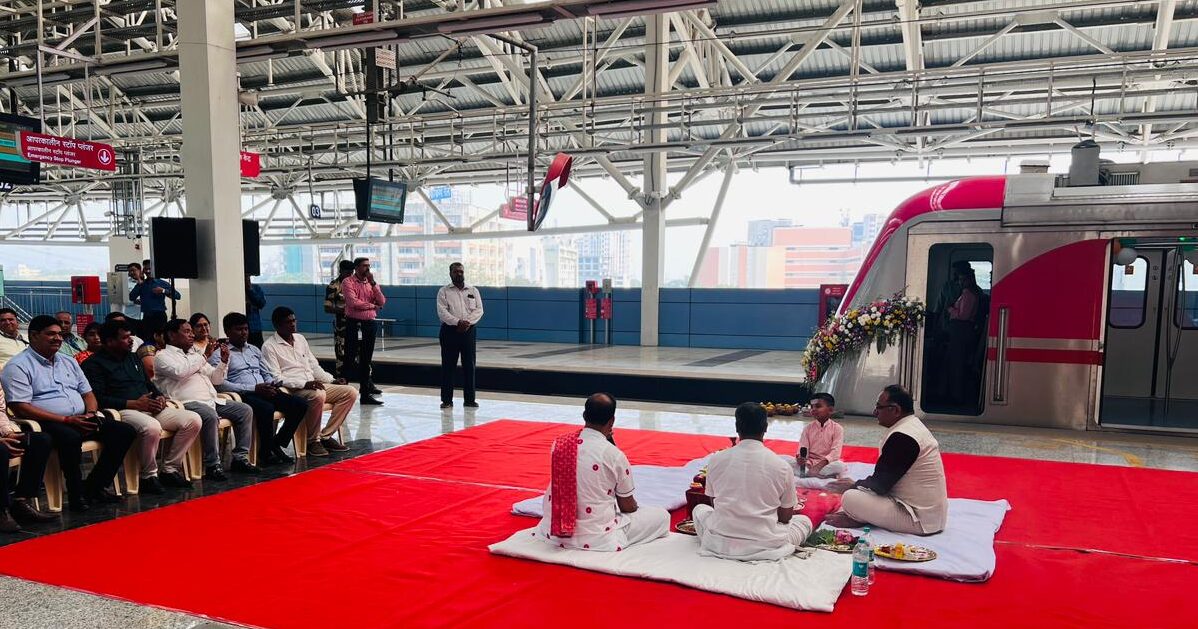Navi Mumbai 17 Nov 2023: Navi Mumbai’s first metro line, connecting Belapur and Pendhar, was inaugurated by Maharashtra Chief Minister Eknath Shinde on Friday, November 17, 2023.
The 11.10-kilometre-long elevated line has 11 stations and will operate from 6 am to 10 pm with a frequency of 15 minutes. The fares will range from Rs 10 to Rs 50.
The metro line is expected to benefit over 2 lakh commuters daily. It will also provide a much-needed relief to the traffic congestion in Navi Mumbai.
The inauguration of the metro line is a major milestone in the development of Navi Mumbai. It is a testament to the commitment of the Maharashtra government to providing better infrastructure for the people of the state l. It is also a symbol of Navi Mumbai’s growth and development. The city is now home to over 12 lakh people and is one of the fastest-growing cities in India.
The metro line is expected to further boost the growth of Navi Mumbai and make it a more attractive destination for investors and businesses.
The inauguration of the metro line was attended by a host of dignitaries, including Maharashtra Deputy Chief Minister Devendra Fadnavis, State Transport Minister Anil Parab, and City and Industrial Development Corporation (CIDCO) Chairman Sanjay Sethi. Speaking at the inauguration, Shinde said that the metro line would be a boon for the people of Navi Mumbai.He also said that the state government was committed to completing the remaining metro lines in Navi Mumbai as soon as possible.
The metro line is a major achievement for CIDCO, which has been working on the project for over a decade. The corporation has faced several challenges, including land acquisition and funding, but it has managed to overcome these challenges and complete the project on time.
The metro line is a symbol of the progress that Navi Mumbai is making. The city is poised to become a major metropolitan centre in the years to come and the metro line will play a key role in its development.
Here are the key features of Navi Mumbai’s first metro line:
- 11.10-kilometre-long elevated line
- 11 stations
- Frequency of 15 minutes
- Metro Fares ranging from Rs 10 to Rs 50
- Expected to benefit over 2 lakh commuters daily
- Expected to reduce traffic congestion in Navi Mumbai
- A major milestone in the development of Navi Mumbai
- A symbol of Navi Mumbai’s growth and development
- Expected to further boost the growth of Navi Mumbai
Benefits of the Navi Mumbai Metro Line:
- Reduced travel time: The metro line is expected to significantly reduce travel time between Belapur and Pendhar, with a journey time of approximately 20 minutes.
- Reduced traffic congestion: The metro line is expected to divert a significant portion of the city’s traffic, reducing congestion on roads and improving overall traffic flow.
- Environmental benefits: The metro line is an eco-friendly mode of transportation, reducing air pollution and greenhouse gas emissions.
- Economic growth: The metro line is expected to boost economic activity in Navi Mumbai, attracting new businesses and investments.
Additional Amenities by Navi Mumbai’s first metro:
- Smart cards: The metro line uses a smart card system for ticketing, providing passengers with a convenient and hassle-free travel experience.
- Free Wi-Fi: Free Wi-Fi is available at all metro stations, enabling passengers to stay connected while on the go.
- CCTV surveillance: The metro line is equipped with CCTV cameras for enhanced security and surveillance.
- Passenger information system: A passenger information system provides real-time updates on train arrivals and departures, ensuring a smooth and informed travel experience.
In conclusion, Navi Mumbai’s first metro line marks a new era of urban mobility for the city, offering a reliable, convenient, and environmentally friendly mode of transport to its residents. The line is poised to play a pivotal role in shaping the city’s future, contributing to its economic growth, social development, and environmental sustainability.
